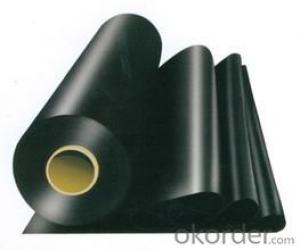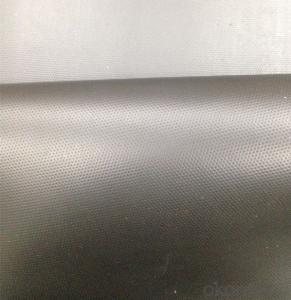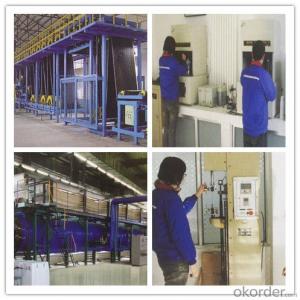EPDM Rubber Waterproof Sheet for Single Layer Roof System
- Loading Port:
- Qingdao
- Payment Terms:
- TT or LC
- Min Order Qty:
- 3300 m²
- Supply Capability:
- 220000 m²/month
OKorder Service Pledge
OKorder Financial Service
You Might Also Like
EPDM Rubber Waterproof Membrane for Single Layer Roof System
Instruction for EPDM Single Layer Roof System:
EPDM waterproof membrane is made from ternary ethylene-propylene rubber,which is designed for waterproofing of exposed and non-exposed applications. EPDM waterproof membrane is of high elasticity among high polymer waterproof materials and becomes a world-popular waterproofing material.
CNBM own the wold-advanced equipment of cold feeding extrusion and continuous vulcanization technology. With the best performance among high polymer waterproof materials, EPDM is of exceptional elasticity and will not split or cracked under normal building movement.
Features of EPDM Single Layer Roof System:
-Excellent weather-ability, durability and size stability
-Good adaptability to high and low temperature, UV resistant and anti-corrosion
-High tensile strength and good elongation, accommodating to structure movement
-Easy installation, solid joint, and mo environmental pollution
-Good rooting penetration resistance
-Service life up to 50 years
Applications of EPDM Single Layer Roof System:
-Roof, basement, tunnel, pond liner, dam
-Industrial and civil building waterproofing
-Geosynthetic liner for fish ponds, swimming pools, channels, irrigation system
-Especially suitable for projects with high requirement in durability, anti-corrosion and deformation
Specifications of EPDM Single Layer Roof System:
-Width of roll: 1.2m, 2m, 4m
-Length of roll: 20m, 30m or customized
-Thickness of membrane: 1.2mm, 1.5mm, 2mm
-Type: vulcanized EPDM or welding EPDM
-Application: roof, basement, pond, lake, swimming pool, steel structure roofing, underground, tunnel, etc
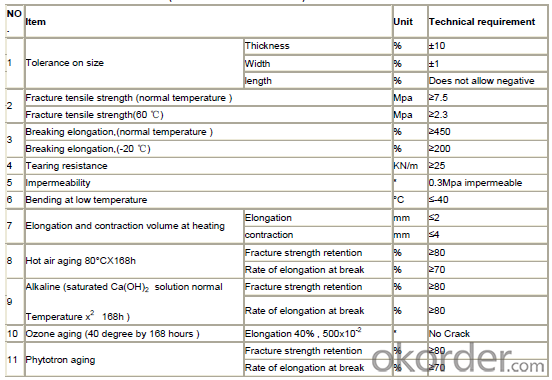
FAQ:
1. Is your EPDM waterproof membrane the real rubber?
Yes, our EPDM membrane is made from top quality rubber, which is imported from America. We support samples for testing, or testing in our factory.
2. How's your products quality?
Our EPDM is with the top quality at home and abroad. Our quality is much higher than Chinese standard. Our product is widely used in Chinese Central government projects. And it's also accpted by customers all over the world, such as EU, USA, Astrulia, etc.
3. What's the service life of your EPDM membrane?
The service life of our EPDM membrane is more than 50 years.
4.What's your MOQ?
Our MOQ is 3000M2.
5. What's your product ability of EPDM membrane?
We own the largest EPDM production line in China. Our product ability of EPDM membrane reaches 2 million square meter per year.
Photos of EPDM Single Layer Roof System:
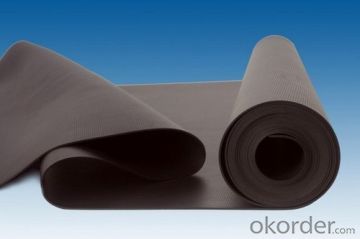
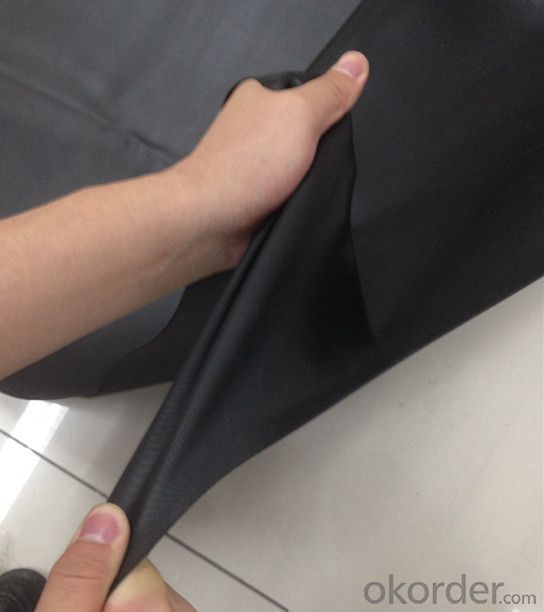

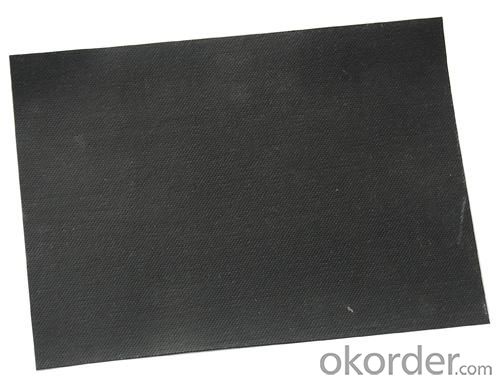

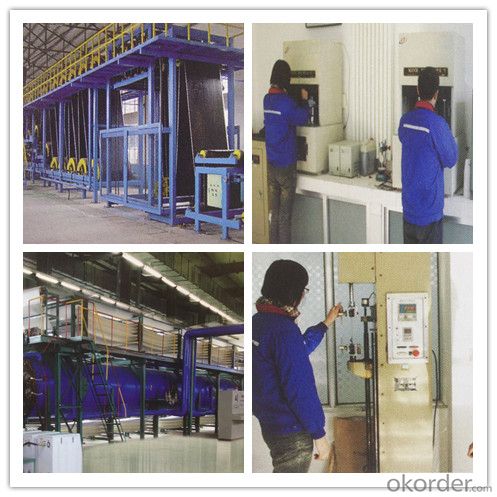
- Q:Can a waterproofing membrane be used in commercial construction?
- Certainly, a waterproofing membrane is a viable option for utilization in commercial construction. In actuality, it serves as an essential element throughout the construction process. Its purpose is to establish a barrier against moisture, effectively preventing water infiltration and safeguarding the structure from potential water-related harm. This element proves particularly crucial in commercial edifices, where water poses a significant threat to the structural integrity. It can lead to severe problems, including mold proliferation, material deterioration, and even compromise the foundation's stability. Waterproofing membranes find widespread application in various areas of commercial construction, encompassing basements, roofs, foundations, and even external walls. They come in diverse forms, such as sheets, liquid coatings, or spray-applied membranes, allowing for flexibility and adaptability in different construction scenarios. All in all, incorporating a waterproofing membrane in commercial construction endeavors is a prudent investment, ensuring the long-lasting endurance and efficiency of the building.
- Q:Can a waterproofing membrane be used in conjunction with solar panel installations?
- Yes, a waterproofing membrane can be used in conjunction with solar panel installations. Waterproofing membranes are commonly used to protect roofs and other surfaces from water damage, and they can provide an additional layer of protection for solar panels. This can help to prevent water infiltration and potential damage to the solar panels and their electrical components. Additionally, waterproofing membranes can also help to extend the lifespan of the solar panel system by providing an extra barrier against moisture and other environmental factors.
- Q:Can a waterproofing membrane be used on precast copper surfaces?
- Yes, a waterproofing membrane can be used on precast copper surfaces. The membrane will create a barrier that prevents water penetration, ensuring the durability and longevity of the copper surface.
- Q:Does a waterproofing membrane have any impact on the appearance of a surface?
- Yes, a waterproofing membrane can have an impact on the appearance of a surface. Depending on the type and application method of the membrane, it may add a layer of protection that alters the texture, sheen, or color of the surface. Additionally, some membranes may be visible or create a slightly raised or textured effect on the surface. However, there are also transparent or thin membranes available that have minimal impact on the appearance of the surface.
- Q:Is a waterproofing membrane compatible with different types of roofing materials?
- Indeed, various roofing materials are compatible with a waterproofing membrane. This flexible solution offers versatility, making it suitable for asphalt shingles, metal roofs, concrete roofs, and even flat roofs. Its purpose is to create a barrier against water infiltration, regardless of the roofing material used. It can be directly applied to the roof's surface or used as an underlayment prior to installing the roofing material. This compatibility guarantees the effective use of the waterproofing membrane, safeguarding and prolonging the lifespan of diverse roof types.
- Q:Can a waterproofing membrane be used for water tanks and reservoirs?
- Water tanks and reservoirs can benefit from the use of a waterproofing membrane. These membranes are specifically designed to create a barrier against water penetration, making them an excellent choice for safeguarding against leaks and seepage. They are typically made of durable materials like modified bitumen, PVC, EPDM, or TPO, which are resistant to water and capable of enduring extended exposure to moisture. By applying a waterproofing membrane to the walls and floors of water tanks and reservoirs, a seamless and watertight seal is created, effectively preventing water loss or contamination. Moreover, these membranes can be tailored to fit different types of water tanks and reservoirs, guaranteeing a perfect fit and optimal protection. In conclusion, the use of a waterproofing membrane is a reliable and effective solution for preserving the integrity of water tanks and reservoirs and ensuring the safe storage of water.
- Q:Is a waterproofing membrane compatible with different types of roofing materials?
- Yes, a waterproofing membrane is compatible with different types of roofing materials. It can be used with various roofing systems such as asphalt shingles, metal, concrete, or tile roofs. The purpose of a waterproofing membrane is to create a barrier against moisture, regardless of the roofing material used.
- Q:Can a waterproofing membrane be used on precast brick surfaces?
- Yes, a waterproofing membrane can be used on precast brick surfaces. Precast brick surfaces are susceptible to water penetration, which can cause damage to the structure and lead to mold or mildew growth. Applying a waterproofing membrane can provide an effective barrier against water infiltration and protect the precast brick surface. The membrane is typically made of a flexible and durable material such as rubberized asphalt, modified bitumen, or polyurethane. It is applied to the surface using a brush or roller, and it creates a continuous and seamless layer that prevents water from seeping into the bricks. Additionally, the waterproofing membrane can also help to improve the overall thermal insulation of the precast brick surfaces and enhance their longevity. However, it is important to ensure that the precast bricks are clean, dry, and properly prepared before applying the membrane to ensure optimal adhesion and effectiveness.
- Q:Can a waterproofing membrane be used on tunnels with emergency exits?
- Yes, a waterproofing membrane can be used on tunnels with emergency exits. In fact, it is highly recommended to use waterproofing membranes in tunnels to protect them from water infiltration and potential damage. These membranes create a barrier against moisture, preventing leaks and ensuring the structural integrity of the tunnel. Emergency exits can also be effectively waterproofed using appropriate membranes to maintain their functionality in case of emergencies.
- Q:Does a waterproofing membrane require a topcoat or sealer?
- Yes, a waterproofing membrane typically requires a topcoat or sealer in order to provide additional protection and enhance its effectiveness. While the membrane itself is designed to prevent water penetration, applying a topcoat or sealer can further reinforce its waterproofing capabilities and extend its lifespan. The topcoat or sealer acts as an extra layer of defense against moisture, UV rays, and other potential sources of damage. Additionally, it can help seal any small cracks or imperfections in the membrane, ensuring a tighter seal and reducing the risk of water infiltration. Therefore, while a waterproofing membrane can offer some level of protection on its own, the addition of a topcoat or sealer is generally recommended for optimal performance and longevity.
1. Manufacturer Overview |
|
|---|---|
| Location | |
| Year Established | |
| Annual Output Value | |
| Main Markets | |
| Company Certifications | |
2. Manufacturer Certificates |
|
|---|---|
| a) Certification Name | |
| Range | |
| Reference | |
| Validity Period | |
3. Manufacturer Capability |
|
|---|---|
| a)Trade Capacity | |
| Nearest Port | |
| Export Percentage | |
| No.of Employees in Trade Department | |
| Language Spoken: | |
| b)Factory Information | |
| Factory Size: | |
| No. of Production Lines | |
| Contract Manufacturing | |
| Product Price Range | |
Send your message to us
EPDM Rubber Waterproof Sheet for Single Layer Roof System
- Loading Port:
- Qingdao
- Payment Terms:
- TT or LC
- Min Order Qty:
- 3300 m²
- Supply Capability:
- 220000 m²/month
OKorder Service Pledge
OKorder Financial Service
Similar products
New products
Hot products
Hot Searches
Related keywords

